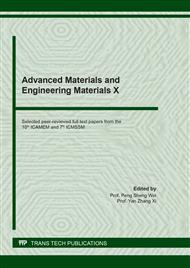p.369
p.375
p.382
p.387
p.392
p.401
p.407
p.413
p.419
Investigation the Ultrasonic Vibration on Tin Soldering Welding of Copper Wires and Plates
Abstract:
Ultrasonic-assisted soldering welding is widely applied for joining difficult materials. The cavitation phenomenon in liquid always occurs during the ultrasonic excitation. Base metals are striked by ultrasonic cavitation, creating erosion on the surface. The soft solder materials are penetrated on the rough surface, generated inter-metallic compounds. This work expresses the design of ultrasonic soldering machine using 20 kHz source and steel sonotrode. The curvature of reflecting plates with specific radius and their location are also condidered. The major technological parameters of ultrasonic soldering welding such as ultrasonic exciting time, power and curvature radii of reflecting plate are discussed. Tin soldering material is utilized for joining copper wires and plates are investigated. SEM images on the surface of tin soldering on cooper plates and tensile strength are investigated.
Info:
Periodical:
Pages:
392-397
Citation:
Online since:
November 2021
Authors:
Price:
Сopyright:
© 2021 Trans Tech Publications Ltd. All Rights Reserved
Share:
Citation:


